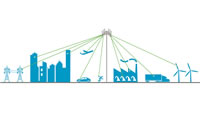Where do you get the I/O for the IIoT?
 Nick Butler, National Instruments for ControlDesign: Data is the heart of all Internet of Things systems, including systems deployed into industrial environments.
Nick Butler, National Instruments for ControlDesign: Data is the heart of all Internet of Things systems, including systems deployed into industrial environments.
When we talk about making the aging electrical grid smarter or the factory of the future more efficient, what we’re really after are insights that can make our equipment and infrastructure smarter and more efficient. And to deliver these incredibly valuable insights, which will result in millions of dollars in savings, uptime or operational efficiency, we need data. Lots of it. We also need complex, computationally intensive algorithms that scour the data to find trends, patterns and anomalies (Figure 1).
While these algorithms and analysis routines are a very important piece of the IIoT puzzle, the best data scientists in the world cannot predict equipment failures without enormous amounts of data. Cont'd...
Comments (0)
This post does not have any comments. Be the first to leave a comment below.
Featured Product

